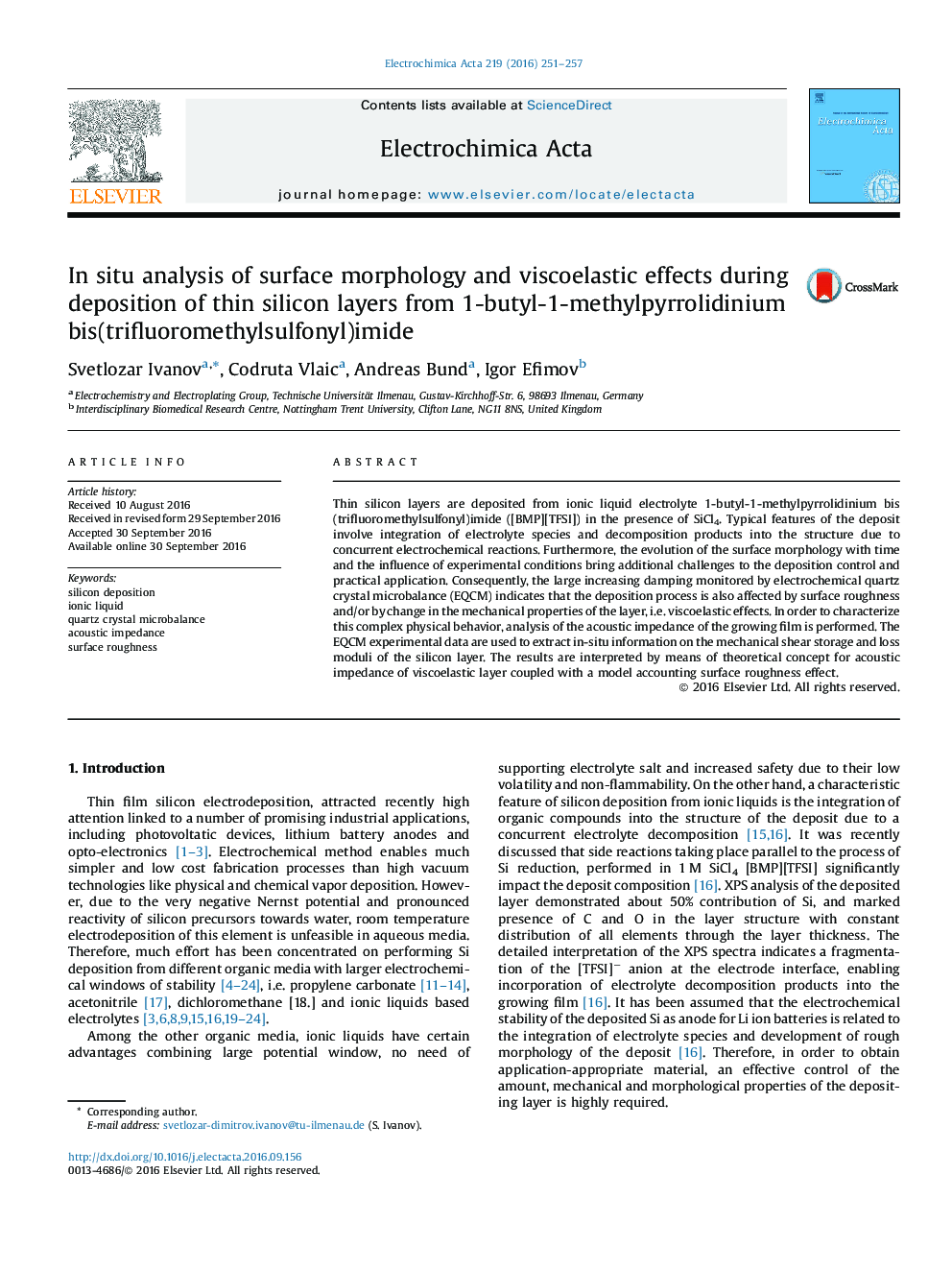| Article ID | Journal | Published Year | Pages | File Type |
|---|---|---|---|---|
| 6472899 | Electrochimica Acta | 2016 | 7 Pages |
Thin silicon layers are deposited from ionic liquid electrolyte 1-butyl-1-methylpyrrolidinium bis(trifluoromethylsulfonyl)imide ([BMP][TFSI]) in the presence of SiCl4. Typical features of the deposit involve integration of electrolyte species and decomposition products into the structure due to concurrent electrochemical reactions. Furthermore, the evolution of the surface morphology with time and the influence of experimental conditions bring additional challenges to the deposition control and practical application. Consequently, the large increasing damping monitored by electrochemical quartz crystal microbalance (EQCM) indicates that the deposition process is also affected by surface roughness and/or by change in the mechanical properties of the layer, i.e. viscoelastic effects. In order to characterize this complex physical behavior, analysis of the acoustic impedance of the growing film is performed. The EQCM experimental data are used to extract in-situ information on the mechanical shear storage and loss moduli of the silicon layer. The results are interpreted by means of theoretical concept for acoustic impedance of viscoelastic layer coupled with a model accounting surface roughness effect.
